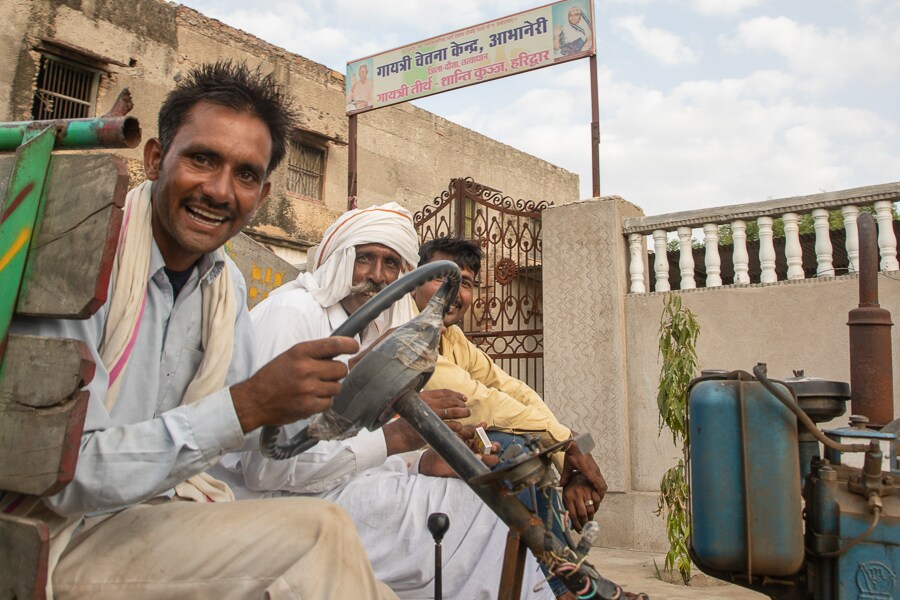Term, health insurance gets new life in smaller towns, villages: Iassure
Abhishek Tiwari, founder of Jaipur-based insurtech startup Iassure, says Covid-19 has caused significant awareness for products other than life and motor insurance


 Men on a tractor in a farm in Baswa, Rajasthan, India.
Men on a tractor in a farm in Baswa, Rajasthan, India.
Image: Eric Lafforgue/Art in All of Us/Corbis via Getty Images"‹
For decades, insurance in India has been synonymous with only one form: life insurance. This holds particularly true for smaller towns and villages, where life insurance was either peddled as savings-cum-investment product or as a tax-saving instrument for the working class. Covid-19, however, has brought about a shift in demand and supply.
Fear and the uncertainty of life, as well as prohibitively expensive Covid-19 medical expenses, have made people opt more for term and medical insurance over life, says Abhishek Tiwari, founder of Iassure, a Jaipur-based insurtech startup.
Business post-Covid-19 has thrown up interesting numbers for Tiwari: While there was a dip of almost 70 percent in the general insurance business, which was largely driven by motor insurance, there was a spike of 78 percent in health and term insurance in April and May.
Launched in 2017, Iassure caters to consumers in semi-urban and rural areas across nine states, including Rajasthan, Madhya Pradesh, Chhattisgarh, Punjab, Haryana and Maharashtra. The bootstrapped venture claims to have issued 3.6 lakhs policies, collected premium worth Rs 438 crore, and posted a revenue of Rs 26 crore. Edited excerpts from an interview with Tiwari:
Q. How has business performed and transformed post Covid?
There has been one fundamental change: Extreme reluctance has given way to acceptance. Before Covid-19, there were hardly any takers for health and term insurance in smaller towns and villages. Insurance for most people either meant life insurance or was confined to other forms such as motor or stock insurance in case of loan from banks.
Health and term both were alien subjects. Look at the numbers after lockdown: A dip of almost 70 percent in our general insurance business—which was largely driven by motor insurance—there has been a spike of 78 percent in health and life term business in April and May.
There was another interesting trend before Covid-19: People use to repeatedly postpone the medical insurance buying decision. Now, there is a sense of urgency. They have seen what happens if one doesn’t have adequate medical cover. They have also seen the futility of having a life insurance cover for life, only for the sake of being covered. Term insurance—or life insurance offering financial coverage for a specific time period—has become popular.
Q. Will Covid-19 also cause an uptick in online adoption or buying of insurance in tier III and beyond?
We need to understand that the population in semi-urban and rural areas of India do not part with their hard-earned money on a faceless platform, and less so for buying insurance. They need handholding, they need a familiar face to take them through the process and make them feel comfortable. Trust is the biggest issue. That’s why a hybrid model works the best. Covid-19 won’t change the medium of transaction—for buying insurance—overnight. But a shift has started, and it will gather pace.
Q. Apart from trust, what were the initial challenges when you started selling insurance in smaller towns?
Absence of financial literacy, lack of awareness, and myths about pricing. Lengthy claim processes also led to a lack of trust. The mindset that ‘nothing can happen suddenly’ also resulted in people staying away from health insurance. In fact, motor insurance was looked upon as a better bet than health insurance. Trucks, tractors, shops, cattle and crops were given prominence over human life cover. There was another issue of high premiums. People were not made aware of small ticket-sized products, as low as Rs 70 for a monthly premium.
Q. So, affordability is one of the main issues for under-penetration of insurance?
Let’s look at the numbers first. When an average household income is under Rs 10,000, how do you expect people to buy medical insurance that costs Rs 8,000 per year? If the same product is available on monthly payments, there would definitely be more takers.
Q. Can Covid-19 be the ‘demonetisation moment’ for health and term insurance?
Well, it looks like it. But one has to fix distribution, product, promotion and technology first.
First Published: Jun 24, 2020, 14:03
Subscribe Now